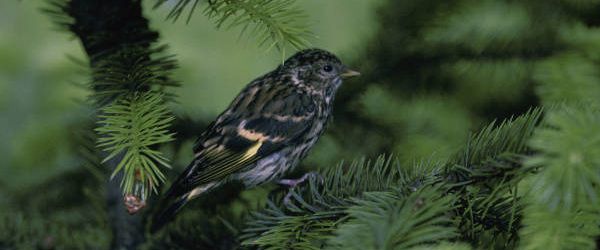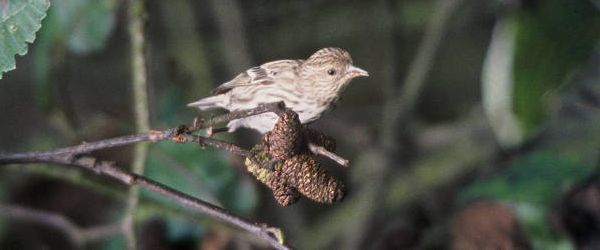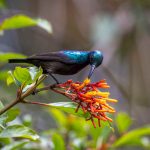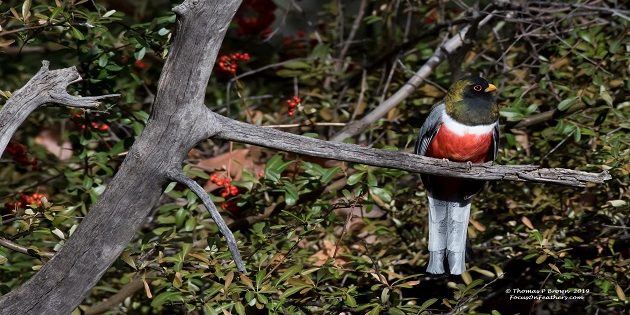It was no longer early morning as I walked back to my apartment from campus, but in Missoula right now it’s hard to tell the difference. It takes until long after the official hour of ‘sunrise’ for the actual sun to stagger over the horizon, and the days are mostly overcast. With students leaving in droves and a thin layer of fresh-fallen snow over everything, it’s a place that can seem peaceful or desolate depending on your mood.
To me it was neither — I’d gotten up so early to attend a friend’s thesis presentation that I was too tired for emotions. But I wasn’t too tired to listen for birds.
A large flock of small somethings bounced through the air up ahead, then settled in a bare tree. At first I thought American Goldfinch, but I soon realized that the call notes were all wrong. So I turned and went after them.
At first they stayed well ahead of me, but they were finally lured into viewing range by a low conifer shrub. And that was only right, because they were (as you’ve probably already guessed) Pine Siskins.
There were about twenty of them, and although I scrutinized the flock for other finches, no Redpolls or Cassin’s Finches or even Goldfinches turned up. That was hardly a hardship though. When I lived in New York, I spent many long, cold, damp hours searching for Pine Siskins, and the novelty of having them around in relative abundance has not worn off yet.
And relatively abundant they are. Pine Siskins, strictly winter irruptives in New York City, are resident in northwestern Montana. I’d already been fortunate enough to add them to my yard list in late summer, when I spotted one tagging along with the flock of Goldfinches attracted by the sunflowers in the yard. That was one of the first moments of mental adjustment, actually, where I realized that I was now living in an area that many of the winter birds of my youth called home year-round.
Pine Siskins are not conventionally pretty birds. In fact, they are textbook LBJs. Nevertheless, there is a certain attractiveness to them, a combination of delicacy and liveliness that when combined with their very gregarious habits makes them irresistible to watch. It almost seems as though, if you attached a fine thread to each of them, they would make lace. This flock, totally absorbed in the shrub and giving excellent naked-eyes views, drew me in like a Zen garden; I stood on the sidewalk and stared while frost-nipped Missoulians walked past and very sensibly ignored me.
And that was revelation enough. There was very little travel involved, no hardship, no pursuit, not even any binoculars, but the simple, unmediated experience of watching these birds go about their business made my day. They were just as special as the ones I had to hunt down back home. I almost felt as though the sun came out.
(Still, there’s also something to be said for mediated experience, because without the internet and the desire to share this story with you, I wouldn’t have learned that Pine Siskins are also inveterate vocal mimics. And let’s face it, that’s pretty cool.)
Images courtesy of the USFWS, by Dave Menke and Lee Karney respectively.















Siskins are nice and all, but I’m looking forward to when you break out the big guns and start seeing Evening Grosbeaks with regularity.
This is a handsome piece of writing–nicely done!
I was looking forward to complimenting you on the bird pics – until the last sentence.
Making lace. That is very beautifully said. Very beautiful.
And HA! Even your trips to Europe clearly can’t disguise you’re a spoiled North American: no one who has had the pleasure (or otherwise) of identifying scores of reed warblers, larks and cisticolas would even vaguely consider Pine Siskins as being LBJs…